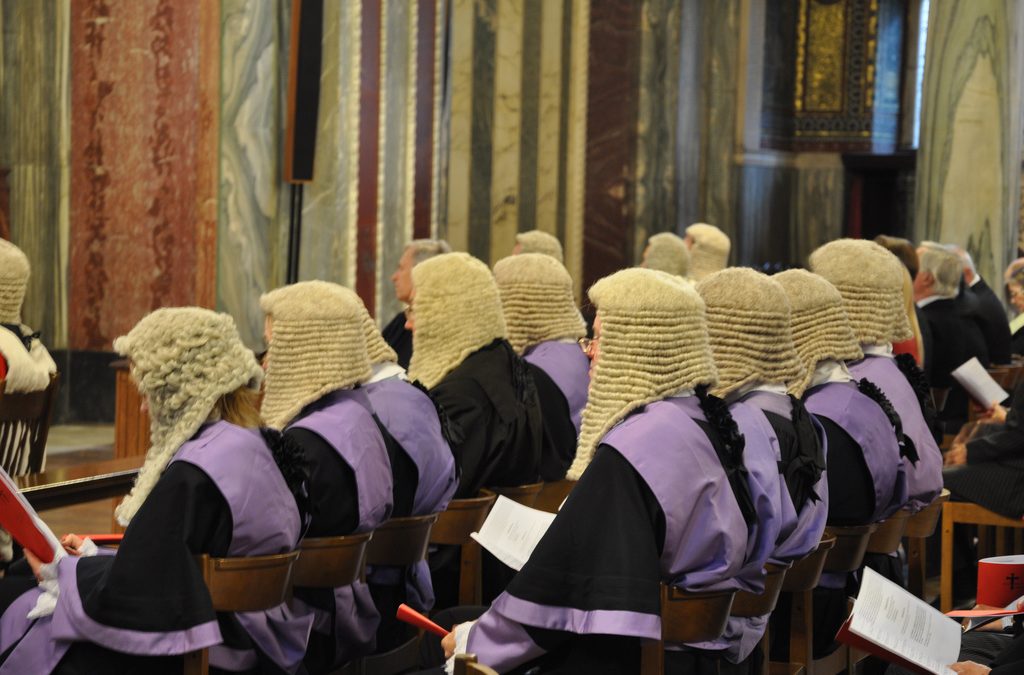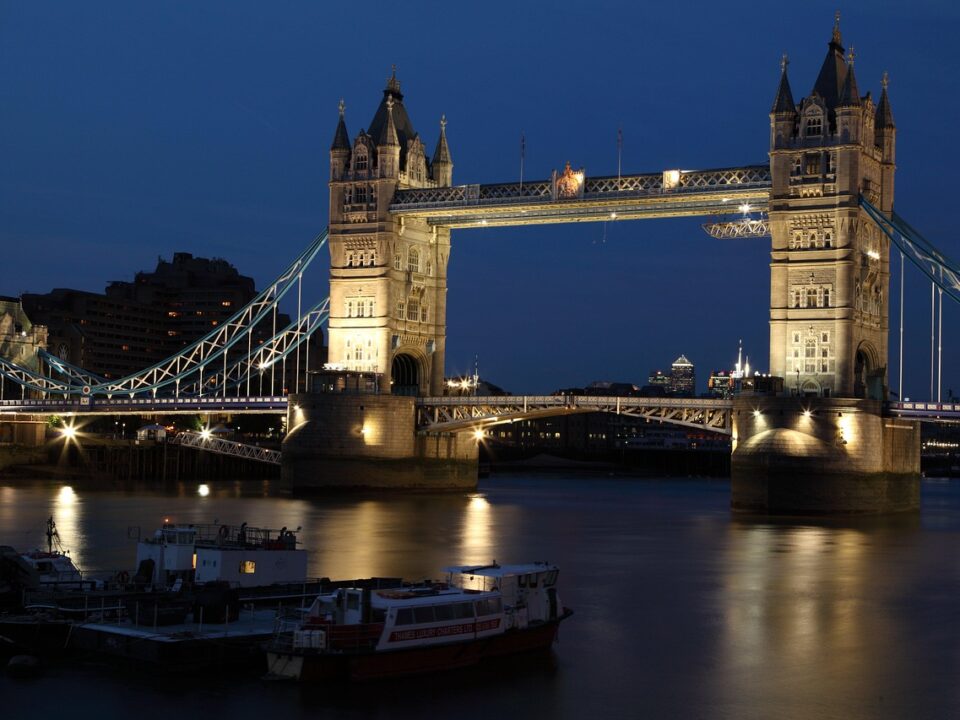
Books Every Lawyer Should Have in Their Library
May 1, 2013
Sexual Offences Prevention Orders
May 8, 2013The doctrine of judicial precedent has been at the heart of the English legal system, being a fashion fiesta for the judges to follow long-standing precedents which, in fact, only slowly evolved and matured from the nineteenth century.[1] Fundamentally, it refers to the hierarchical structure of the English courts within which a decision of a higher court will be binding on a court lower in the hierarchy. The decision contains two types of statements: first, there are ‘ratio decidendi’ statements which are binding and are statements of law applied, and second, there ‘obiter dictum’ statements which are statements made ‘by the way’. Nevertheless, some judges have been criticised for making law via the doctrine of precedent. Subsequently, the question of judges being unconstitutional arises. However, as we shall see, sometimes judges sitting in the House of Lords (the Supreme Court), Privy Council, Court of Appeal and two separate European Courts do indeed make law and state the law.
The Supreme Court, formerly the House of Lords, is the highest court in the United Kingdom and is bound by the European Court of Justice for European Union law matters and also by the European Court of Human Rights for issues related to human rights. The House of Lords was also bound by its own decisions as per London Tramways v London County Council [1898] AC 375 [2] until Lord Gardiner in the House of Lords issued a Practice Statement [3] in 1966 which allowed only them to depart from the previous decisions as a last resort to do justice. The Practice Statement was used successfully in Conway v Rimmer [1968] AC 910 [4] when they overruled Duncan v Cammell Laird and company [1942] AC 624. [5] The circumstances of the case were such that it would be an injustice to apply the 1942 precedent despite the fact that the earlier case had very similar material facts. However, crucially, the decision taken in 1942 was affected by the war period but in 1968 there was no war. The Practice Statement 1966 highlights our topic by illustrating how judicial precedent was refined thorough practice. However, the House of Lords made it clear by stating, ‘apart altogether from our recent liberation from some of the chains of precedent, which for my part I think should only be exercised rarely and sparingly’.[6]
The Privy Council, being the Commonwealth court, could also provide a good illustration of judicial precedent being changed by the courts as they wish. In 1997, the Privy Council received a case from Hong Kong cited Luc Thiet Thuan v R [1997] AC 131 (PC) [7] in which the old precedent set in R v Camplin [1978] AC 705 [8] was followed. This concerned the need for the jury to be convinced that provocation was enough to make a reasonable man do what the defendant did. However, later the House of Lords in R v Smith (Morgan) [2001] 1 AC 146 [9] overruled Luc Thiet Thuan because they felt that the jury should take into account all the characteristics of the defendant. Then in 2005, the Privy Council received a case from Jersey cited Jersey v Holley [2005] 3 AER 371 [10] and, despite being bound by the House of Lord’s precedent set in Morgan-Smith, they in fact they followed their own precedent which was Luc Thiet Thuan. An interesting fact was the Law Lords which sat in the House of Lords also sat in the Privy Council.[11] The area of law on provocation and murder needed clarification and subsequently, the precedent was changed back to the original.[12] Thus, this illustrates that judges change precedent as they wish, like in Jersey v Holley, without waiting for a case to come up in the House of Lords and then rectify the mistake made in Morgan-Smith.
The Court of Appeal, being the second most senior court in the UK, has also played an important role in shaping the doctrine of precedent. Originally, it was bound by its own decisions and also of the House of Lords and the two European courts. However, in the Civil Division of the court, the lordships ruled that the court may depart from their own precedents if the situation complies with any of the three exceptions laid down in Young v Bristol Aeroplane Company limited [1944] 1 KB 718 [13]. The three exceptions [14] in which precedents might be departed from at the discretion of the court are when an earlier decision given was in ignorance of some authority like a statue or even an old precedent, [15] and we saw application of this exception in Williams v Fawcett [1985] 1 All ER 787. [16] The second exception is where there is a conflict between two earlier decisions of the Court of Appeal. In this instance, the later court must decide which to follow; Tiverton Estates Limited v Wearwell [1974] All E.R. 209. [17] The last exception is where a previous decision of the Court of Appeal is in conflict with a later House of Lords decision. Here, the decision of the House of Lords must be followed; Family Housing Association v Jones [1990] 1 W.L.R. 779, C.A. [18]
The Criminal Division also follows the same principles but keeps the liberty of the subjects as a key priority. A great number of new legislation on criminal justice has prompted the Court to create new precedents because they cannot apply old precedents if they are inconsistent with the new legislation, as parliament is sovereign. This example is consistent with our topic of courts creating precedent through practice.
The European Court of Justice (ECJ) was created by the Treaty of Rome and has been in force since 1952 in the UK. Its decisions in some instances have affected the English courts when trying to follow their establish precedents. Article 267 of the Treaty of Lisbon [19] states that if there is ambiguity with relation to European Union law, they should refer back to their community court in Luxembourg. When the ECJ rules on a specific EU law question then the national courts apply the ruling to the case before them. A popular authority here would be R v Sectretary of State for Transport (ex parte Factortame) No 2 [1991] 1 AC 603 [20] in which the House of Lords changed their decision and gave judgment in light of the ECJ’s ruling. The question of when to refer to the ECJ was raised which concluded with Lord Denning’s implication [21] which was replaced by Lord Bingham,[22] stating that not only when the question referred was conclusive of the case but whenever there is doubt over a legal issue concerning European Union law.
The preliminary ruling procedure was used in a long case of M H Marshall v Southampton and South-West Hampshire Area Health Authority (Teaching) [1986] EUECJ R-152/84 [23] where a lady was discriminated against when terminating her contract. She claimed damages, but the national law had set a limit on the amount of damages claimable which was contrary to European Union law. The ECJ ruled that there should be no upper limit on compensation for damages through preliminary ruling with the help of Article 267.[24]
Rights were brought home through the Human Rights Act (HRA) 1998 [25] and the rights also brought with them the articulation of the European Convention on Human Rights (ECHR) law. According to Section 2(1)(a) of the HRA, national courts must ensure that their decisions take into account any judgments, decisions, declarations or advisory opinions of the ECHR. The phrase ‘take into account’ lead to a series of arguments questioning whether it may or may not mean that the domestic courts always have to follow the ECHR. Subsequently, judges had to ensure that any precedent relied upon is compatible with the rights gifted under the Convention. A landmark authority which changed the old principle that the Court of Appeal is bound by the House of Lords is Kay and others v Lambeth Council [2006] UKHL 10.[26]
Lord Bingham offered some guidelines as to when a court could depart from the House of Lords and should follow a case of the ECHR: when an ECHR case has been decided after the House of Lords case, or when there was an incompatibility between convention law and domestic law and that this is not based on the Act of Parliament. Recent cases like Secretary of State for the Home Department v AF & Another and one other action [2009] UKHL 28 have illustrated that the doctrine of precedent is being taken over by the court in Strasbourg. In this case, Lord Rodger’s obiter dicta contained comments like ‘in reality, we have no choice: Argentoratum locutum, iudicium finitum – Strasbourg has spoken, the case is closed’.[27] From his words, we can see that judicial precedents may have exceptions and they are best discovered through practice especially when judges face situations like these.
We have seen with reference to the above Courts that judges are creating precedents in the course of practice by saying that they are simply following the doctrine of precedent. Judges usually avoid the doctrine impliedly by using three methods. Overruling is used by the higher courts in the hierarchy which sets aside a legal ruling established in an earlier different case in the lower court. Higher courts, when hearing an appeal case, can used the reversing method. This is where the superior court reverses the decision of the case ruled in the lower court. Last but not the least, distinguishing is one of the judges’ favourite methods. This allows them to they simply distinguish on the facts of the case and say that the precedent cannot be applied because the material facts differ.[28] Sometimes judges use multiple precedents to create a single new precedent.
Nonetheless, understanding judicial precedent by referring to how judges follow in the course of practice is the key way to master it. Lord Denning tried to change judicial precedent by asking to amend the rules through his campaign rather than doing it tactfully through practice. Lord Denning wanted to apply the House of Lords’ Practice Statement 1966 to the Court of Appeal. However, Lord Diplock counter-argued by saying that certainty and predictability must prevail. This research essay could not end without a famous quote from Lord Denning in Davis v Johnson:
A rule as to precedent (which any court lays down for itself) is not a rule of law at all. It is simply a practice or usage laid down by the court itself for its own guidance: and, as such, the successors of that court can alter that practice or amend it or set up other guide lines, just as the House of Lords did in 1966.[29]
In a nutshell, judicial precedent has always been a core principle in our English legal system. Judges have been following it, and for one to understand judicial precedent, merely looking at the set of rules will not help. As we have seen with reference to the above courts, where a judge wants to refine or change the precedent; there are means of doing so, but not openly like Lord Denning’s campaign but rather through practice either by distinguishing on facts or in exceptional situations where above authorities allow them to override the precedent. Nevertheless, judges refine or change precedent which is not adverse at all because, ultimately, they want justice to be provided via the doctrine of precedent.
Mahesh Nanwani is a penultimate year student reading Law at the University of London.
[1] Smith, C. (1820-1914). The English Legal System. The Oxford History of the Laws of England, XI.
[2] London Tramways Co. v London City Council [1898] AC 375
[3] Practice Statement [1966] 3 All ER 77
[4] Conway v Rimmer [1968] AC 910
[5] Duncan v Cammell Laird and Co. Ltd [1942] AC 624
[6] Lord Upjohn in Conway v Rimmer [1968] AC 910
[7] Luc Thiet Thuan v R [1997] AC 131 (PC)
[8] R v Camplin [1978] AC 705
[9] R v Smith (Morgan) [2001] 1 AC 146
[10] Jersey v Holley [2005] 3 AER 371
[11] Privy Council overrules Lords to put judgment back on track, Clare Dyer, legal editor, The Guardian, Monday 30 January, 2006
[12] Ibid.
[13] Young v Bristol Aeroplane Company Limited, [1944] 1 KB 718
[14] Gooderson, R. N. (1950). The Rule in Young v. Bristol Aeroplane Co., Ltd. The Cambridge Law Journal, 10(03).
[15] Decision per Incuriam
[16] Williams v Fawcett [1985] 1 All ER 787
[17] Tiverton Estates Limited v Wearwell [1974] All E.R. 209
[18] Family Housing Association v Jones [1990] 1 W.L.R. 779, C.A
[19] Treaty of Lisbon, European Community (Now Referred as European Union)
[20] R v Sectretary of State for Transport (ex parte Factortame) No 2 [1991] 1 AC 603
[21] Lord Denning in Bulmer v Bollinger [1974]
[22] Lord Bingham in International Stock Exchange Limited Ex parte Else [1982]
[23] M. H. Marshall v Southampton and South-West Hampshire Area Health Authority (Teaching). [1986] EUECJ R-152/84
[24] Law Report: No limit to discrimination award: Marshall v Southampton and South West Hampshire Area Health Authority. European Court of Justice, Luxembourg, 2 August 1993. London: The independent. (Found on The Independent’s website Archives)
[25] Human Rights Act 1998
[26] Kay and others v Lambeth London Borough Council [2006] UKHL 10
[27] Secretary of State for the Home Department v AF & Another and one other action [2009] UKHL 28
[28] Distinguishing facts to depart from Precedent, Quin v Leatham [1901] AC 495
[29] Lord Denning in Davis v Johnson (1979) AC 264





